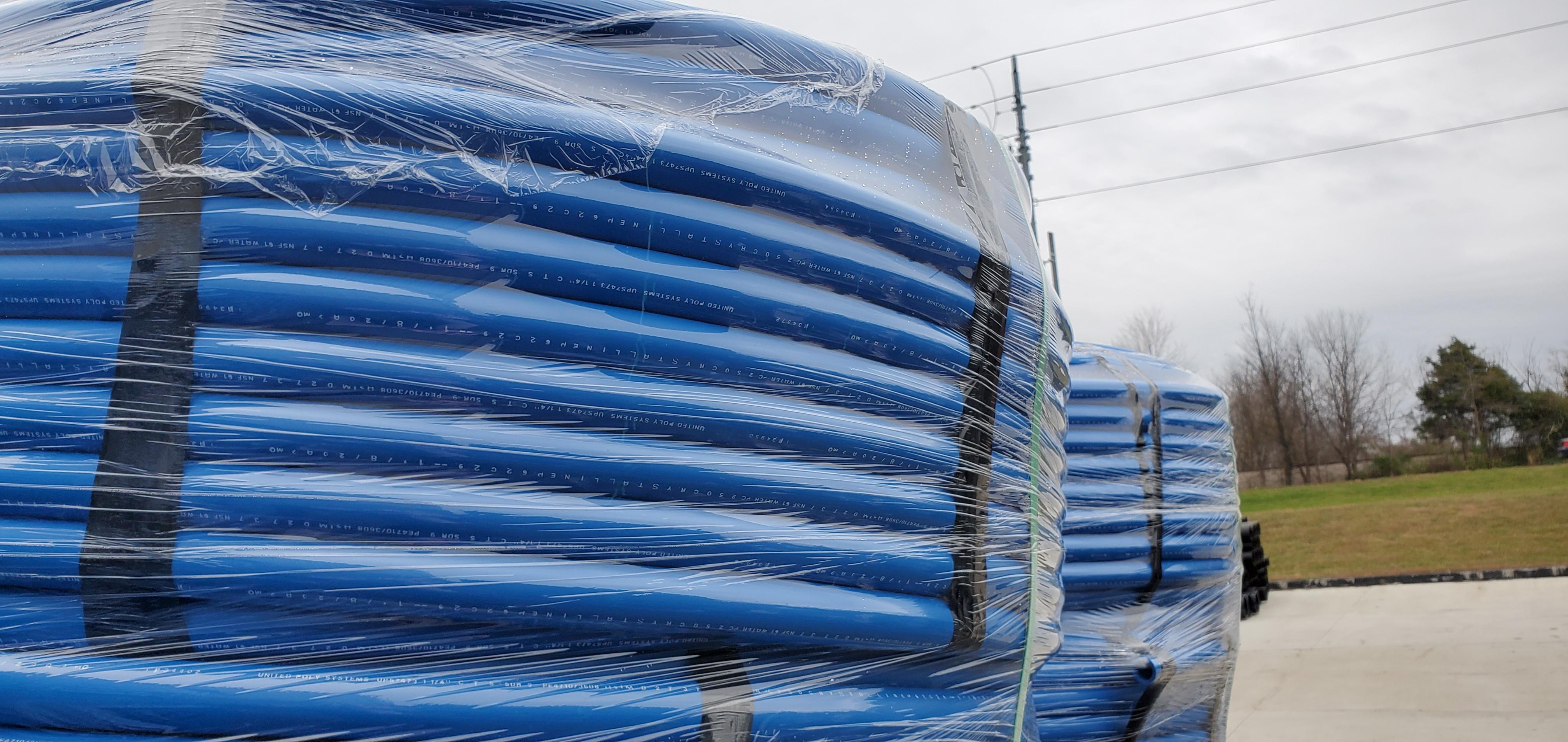According to the Plastics Pipe Institute (PPI), multiple product standards have been published for specific types and applications of HDPE conduit over the past 25 years. PPI encourages end users, engineers and specifiers to update project specifications to reference the correct HDPE conduit product standard. Moving forward, PPI suggests removing reference to pressure pipe standards or project specifications to replace with the most appropriate HDPE conduit standards through selection of a single HDPE conduit standard that most clearly matches the application.
Additional standards and certification information is available from PPI’s frequently requested HDPE codes, standards and certification section of the Frequently Asked Questions page on their website. As an association, PPI focuses collaborative efforts to accumulate data, concentrate facts and target resources toward advancements in applications and increases in widespread usage. United Poly Systems is active member of PPI.
From broad to specific, PPI publication TN-50 Guide to Specifying Conduit provides information about the history of the development of HDPE conduit and the various codes, standards and certifications which apply to these products. This resource may also be used as a guide for selecting appropriate standard specifications for users and specifiers.
Below are some excerpted PPI FAQs related to standards and certifications.
Most requested HDPE conduit codes, standards and certifications questions
What standards exist for conduit and where can I find them?
Conduit standards are issued by ASTM International (e.g., ASTM F2160, D3485); Underwriters Laboratories (UL & ULC) (e.g. UL651A, UL 1990); NEMA (e.g., TC7, TCB-4, TCB-3); and the Canadian Standards Association (CSA) (e.g., CSA C22.2 NO327).
Different standards may be intended for different end-uses and applications. Always read the scope of the standard to learn about its intended end-use.
What does ASTM stand for?
ASTM was the American Society for Testing and Materials but has been renamed ASTM International to communicate the international scope and acceptance of its standards. It is an association of manufacturers, engineers, consultants and governmental officials who write standards for materials and products used in all types of construction, including conduit. ASTM Standards for conduit are ASTM F2160 and ASTM D3485.
ASTM F2160 vs. D3035, D2239 or D2447?
ASTM F2160 and D3485 are ASTM standards specifically written for conduit products. ASTM D3035, ASTM D2447, ASTM F714 and ASTM D2239 are ASTM water pipe specifications often referred to in conduit specifications.
Dimensionally, pipes conforming to ASTM F2160 and the various water pipe ASTM standards are the same. However, the material specification for water pipes includes pressure strength requirements and may not have been tested to all the standard conduit requirements. Using water pipe ASTM standards for conduit applications can raise the price significantly because pressure rated resin is more expensive than conduit non-pressure rated resins.
What is UL or CSA Certification?
UL or CSA certified products are products that have been certified by a third party (Underwriters Laboratories or Canadian Standards Association) to conform to a standard. Typically, certification involves regular audits of the manufacturer’s production facility and periodic tests of samples from those facilities. Audits and sample tests ensure conformance with the specified standards.
UL or CSA certification may be required by certain customers or by code requirements in the power industry. In many applications third-party certification is not required as it adds cost. Not all products may be available with third party certification so check with the conduit manufacturer. Note that ASTM and NEMA do not provide certification services: in most cases, conduit manufacturers will attest to the fact that their products conform to one or more industry standards.
What is the difference between UL certified resin and ASTM F2160 resin?
Resins can have either or both classifications. Both UL certified and ASTM F2160 are quality resins and meet the same requirements; however, UL certified resin is independently tested and certified. A manufacturer is required to use a UL certified resin for UL certified product. Blending or mixing is not allowed by UL standards.
What are the NEC requirements for HDPE Conduit?
The US National Electric Code (NFPA 70) is the code regulating HDPE conduit use in power applications. Section 353 (2014 edition) specifies that conduit and fittings shall be listed and indicates conditions under which it can be used. Generally, conduit must be buried or encased and cannot be used in applications with an ambient temperature greater than 50 °C (122 °F). The cable fill limits are defined.
Conductors or cables rated at a temperature higher than the listed temperature rating of HDPE conduit are permitted to be installed in HDPE conduit, provided the conductors or cables are not operated at a temperature higher than the listed temperature rating of the HDPE conduit. For more information review National Electrical Code NFPA 70.
About United Poly Systems
HDPE pipe is durable, flexible, and corrosion-resistant option for public utilities and power, to telecommunications and beyond. The market for HDPE pipe continues to grow as initiatives to improve, repair and expand infrastructure are implemented. HDPE conduit can be installed quickly and easily via directional drilling, trenching, micro-trenching and plowing.
UPS’ off-the-shelf HDPE conduit/pipe is available in a variety of sizes, colors, dimensions and lengths, with or without stripes. In addition, UPS can customize the pipe's diameter, thickness, color and other options to suit your project and can manufacture custom lengths to maximize footage and reduce connections.



